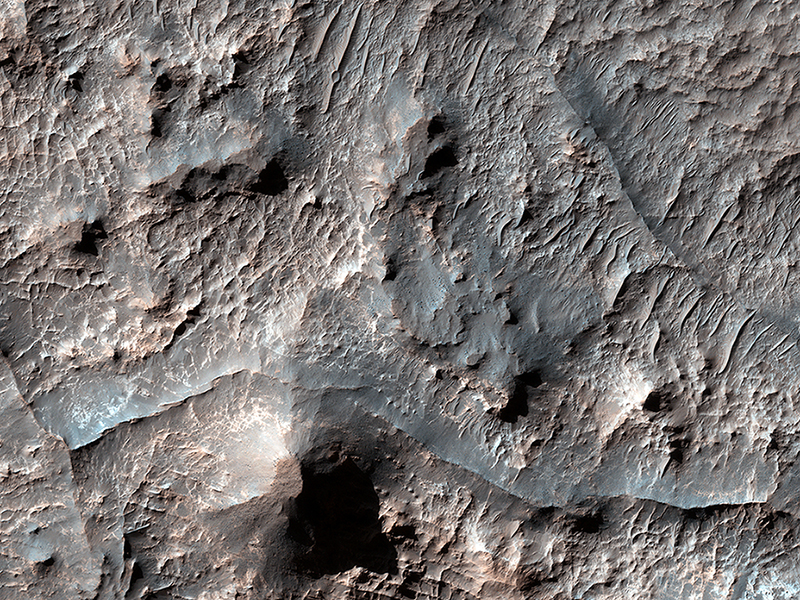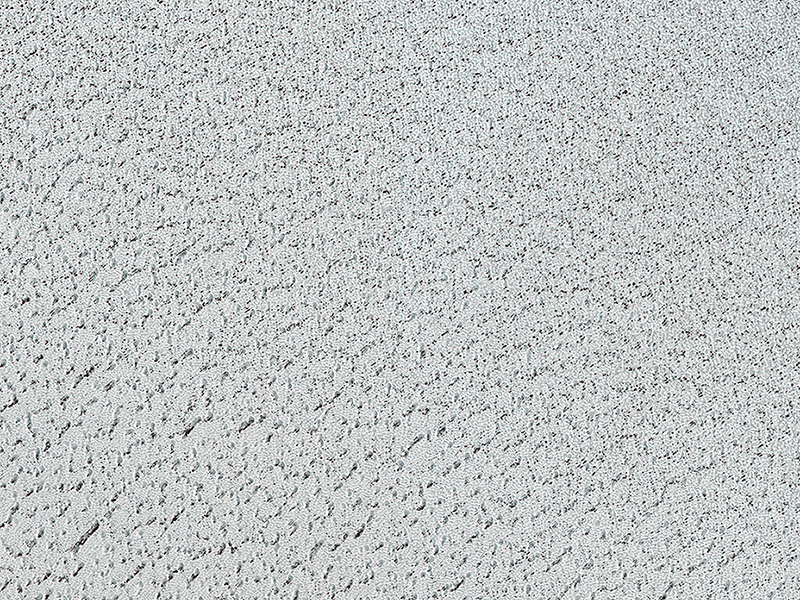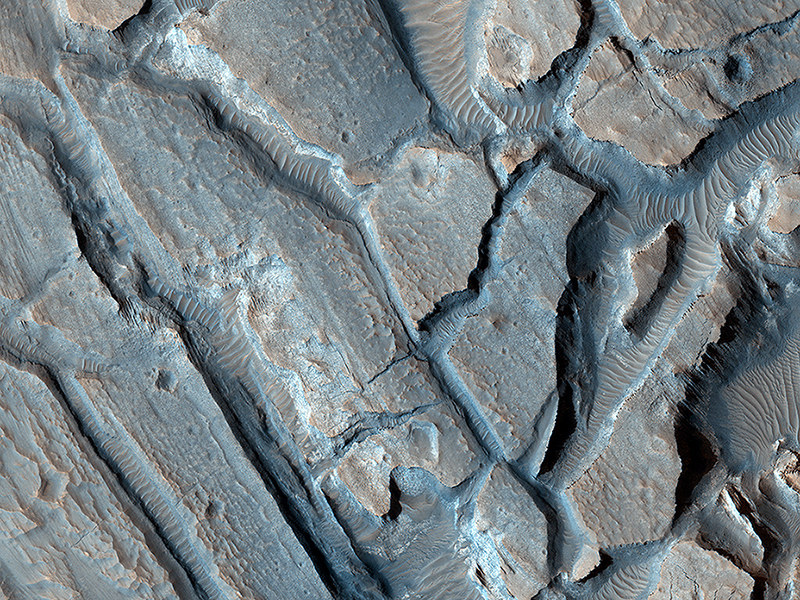Cathy Weitz wrote:Ridges in Eridania Basin (ESP_036654_1490) (HiClip)
Eridania Basin, located at the head of Maadim Vallis, has mounting geomorphic and spectral evidence that it may have been the site of an ancient inland sea.
This site presents interesting mineralogical and geological evidence for the past existence of a large aqueous system on Mars that could have been long lived, and may have been well suited for ancient life, and almost certainly contains important clues about the ancient climate.
In this HiRISE image, there are numerous dark ridges against a brighter substrate. These ridges could be cemented and topographically inverted fractures, although other origins (such as eskers, channels, or volcanic dikes) cannot be ruled out. One way to produce these ridges would be when fluids moved through the fractures, causing cementation and hardening. Later, erosion removed the softer rocks surrounding the fractures, while the more resistant cemented materials within the fractures were left standing higher, thus appearing inverted.
Patrick Russell wrote:The Icy Surface of the North Polar Cap (ESP_036867_2655) (HiClip)
At Mars’ North Pole is a dome of icy layers ranging up to 2 kilometers thick, roughly analogous to the Earth’s ice caps in Greenland or Antarctica.
Although not visible here, the dome is characterized by incised spiraling troughs that reveal sequences of layers thought to reflect varying climate conditions over the time they were originally deposited. This image is of an area on the top surface of the polar dome between the troughs — vast, generally smooth, flat plains composed of a thin layer of very pure water ice. This image also shows that this thin ice layer has a rough texture, composed of knobs, ridges, and depressions on the scale of 1 - 10 meters.
This texture is only beginning to be studied with the high-resolution capabilities of HiRISE — the details of the texture varies around the polar cap, but the causes of the variation are not yet clear. This image has two particularly interesting features. One is that the surface dips into a depression towards the southwest, where the texture of the ice surface appears to change. The other is that there is a fracture or chain of pits in the southeast, which is a rare feature.
The brightness, composition, texture, and small-scale features of this ice layer that covers most of the polar dome are important as they influence the local energy balance (such the amount of sunlight reflected and absorbed), which in turn influences polar-wide climate and the stability of ice.
Alfred McEwen wrote:Ancient Lake Sediments in a Crater (ESP_037122_2165) (HiClip)
This image shows some interesting fractured materials on the floor of an impact crater in Arabia Terra.
There is a channel entering the crater and exiting it (see CTX image). This channel, along with an unusual deposit on the lowest part of the floor, suggests that there was once an ancient lake that deposited sediments here.
Our enhanced-color sample shows layered deposits, some with polygonal patterns, as might be expected from lake sediments. The fracturing of these deposits might have resulted from the sudden breaching of the crater rim, draining the lake.
This is a stereo pair with ESP_035843_2165.
Credit: NASA/JPL/University of Arizona
<< Previous HiRISE Update


